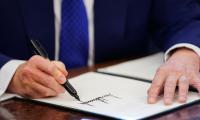When Brics met at Xiamen, China for their ninth summit, their declaration counted the LeT (Lashkar-e-Taiba), JeM (Jaish-e-Mohammad) and the Haqqani Network as three among many proscribed groups which spawn terrorism in South-South West Asia. The list also included Daesh, Al-Qaeda, and the Taliban – both Afghan and the TTP – and the ETIM (East Turkistan Islamic Movement), a hand-in-hand affiliate of all other groups and perhaps the most ferocious in terms of its terrorist ways.
The ETIM mostly constituted the Muslim rebels of the Xinjiang Province of China who like all others were driven to re-establish the Islamic roots of their regions away from the control of the Chinese order. It had found succour in North Waziristan among the many groups that had congregated there after fleeing from the US’ war in Afghanistan, finding sustenance in each other.
The US may have founded the fourth-generation war to beat the Soviets in 1980s, and then to revisit Afghanistan in imperial rage, but what it left behind with the rubble was a handy group of free-agent soldiers who marketed their services to the highest bidder. The proxy game ensued and hasn’t stopped since. And it wasn’t Pakistan alone, but a host of others who have handily partaken off the bitter loot. Afghanistan is today the hotbed for all – groups with guns for hire within the safety of their havens enabling both ideological and political ends with their militant ways.
These groups relocated to Afghanistan from the uncontrolled border regions of Pakistan where the Afghan central government continues to lose areas to the Afghan Taliban. By some count the Taliban now control 40-50 percent of the Afghan territory, enough to provide safe havens to all who were pushed out by Pakistan in a series of operations, including the Afghan Taliban themselves. This also included the TTP, and a few others who have persistently attacked Pakistani state and society. Most heinous crimes in Pakistan in the last ten years were perpetrated by these anti-Pakistan groups.
It was in this backdrop that the Brics declaration found the eminence that it did. The fact that it came soon after President Trump’s insinuations, which particularly counted the Haqqanis, was widely considered an indictment of sorts of Pakistan by its two historical allies; one an erstwhile ally of the years of war against terror, and another a historically strategic partner. That Trump’s statement also conveniently included the LeT and the JeM, two organisations of the greatest concern to India for their focus on Kashmir, meant that the US wasn’t forgetting its new strategic partner India while framing Pakistan. That Pakistan has suffered as much in this project easily escaped American attention.
If the Brics declaration included the Haqqanis and what irked India for its own strategic ends, there was also a mention of the TTP and Daesh which threaten Pakistan. If China included its own concern (the ETIM), it did not forget to push the TTP in which has known Indian and Afghan links focused on keeping Pakistan’s pot stirring. The US, the principal actor in Afghanistan conveniently chooses to look the other way. Add a few more from the regional neighbours, including those officially patronised through their respective intelligence networks, and Afghanistan boasts of being a launching pad for what is vile and odious. The Afghans suffer as much but their elites benefit from the rent which comes their way for the service. No one is willing to disturb this profitable venture.
China had long complained on the ETIM when the Pakistani state began tackling it on priority. The ETIM was one of the first groups to lose its principal leadership and possibly its structure when the operations against these groups began in North Waziristan. China’s apprehensions of it reappearing in another form are however justified and the country has taken remedial measures in Xinjiang to deny support to the group there. But, the sentiment remains and will have to be addressed through policy intervention.
India happily included in the declaration what bothered it but then added the Haqqanis to return the favour to their new friends, the Americans. The reality on the Haqqanis is far different now, with all their cadres now in Afghanistan – remember the Taliban control almost fifty percent of the country – as are their operations and their interests. Their leaders too lead and operate their battles in Afghanistan. Their ideological and religious mentors may have once been Pakistanis, particularly the Madressah Haqqania, but they are now a force on their own steam. They are not an independent entity in their war against foreign forces in Afghanistan but complement the larger Taliban denomination.
The LeT and the JeM, both proscribed organisations by the UNSC and Pakistan, have little relevance to Afghanistan, which was the elephant in the room, but their presence in the list was meant to particularly frame Pakistan, India’s perpetual nemesis. If Trump’s annoyance became the preamble, the Indians endeavoured to make the Brics declaration their main thrust to corner Pakistan – using Brics as a platform of convenience. China as the host, and with its own set of objectives in the larger geopolitical play, could have only resisted so much; hence, a declaration that seemed to cover all bases.
All in all Brics’ wasn’t a regressive declaration. It identified the threats to regional peace and the need to eliminate space for these groups. India may have intended to sully Pakistan’s name but missed another important qualification in the declaration noting the nefarious role of foreign forces in perpetuating instability. India remains the biggest violator of them all and encourages rampant subversion in Pakistan to pose a second front through the anti-Pakistan groups located in Afghanistan. It complicates Pakistan’s efforts to eliminate the menace of terrorism and radicalisation by exploiting cleavages within the Pakistani state and societal structures, thereby sustaining the fissures.
Afghanistan’s neighbours though hold an imperative to pursue peace for their own good, while those from farther lands, including India, have little to lose if Afghanistan keeps on the boil and her neighbours, including Pakistan, continue to feel the heat. A regional approach to peace built around Afghanistan’s neighbours remains the most profound way of defeating designs to keep the region from realising one. Pakistan has begun the journey to that end, Brics or no Brics. If kept to it should soon reverse the malice of few.
Pakistan’s internal cleavages are often manipulated by outsiders to pursue their damaging ends. Some seemed to gloat over Pakistan’s indictment which invoked the establishment’s role in becoming a part of what the US had first introduced in 1979 towards its own ends. In the long term, though, Pakistan’s single-minded focus on eliminating residual terrorism and extremism from its midst remains the key to defeating insidious designs.
Email: shhzdchdhry@yahoo.com
US President announced a $500 billion investment to build robust AI infrastructure and secure an edge over...
These figures reflect consistent investment patterns spanning at least decade
President Trump hints at possibility of imposing tariffs on EU and reciprocal tariffs on many countries
This change eliminated outdated civil service structure, replacing it with results-based governance model
Pakistan’s learning poverty rate stands at 77%, positioning it among the most challenged educational systems worldwide
Political observers believe PTI was pinning hopes on Trump for any possible relief for Imran Khan







